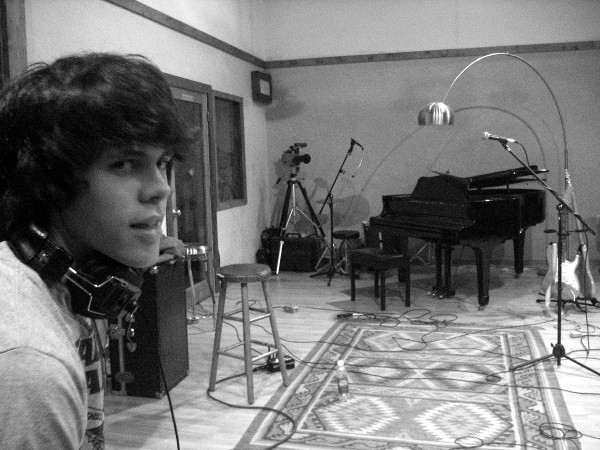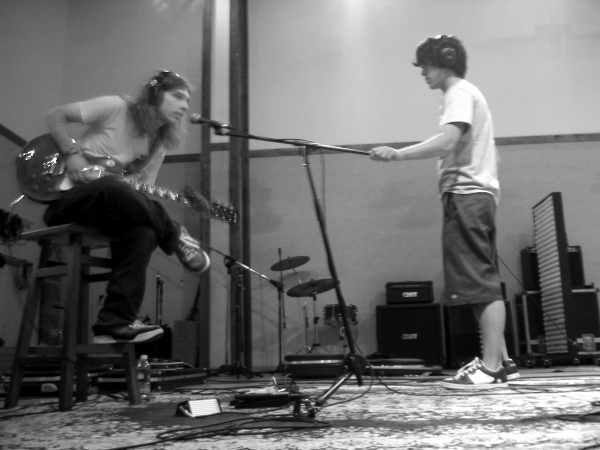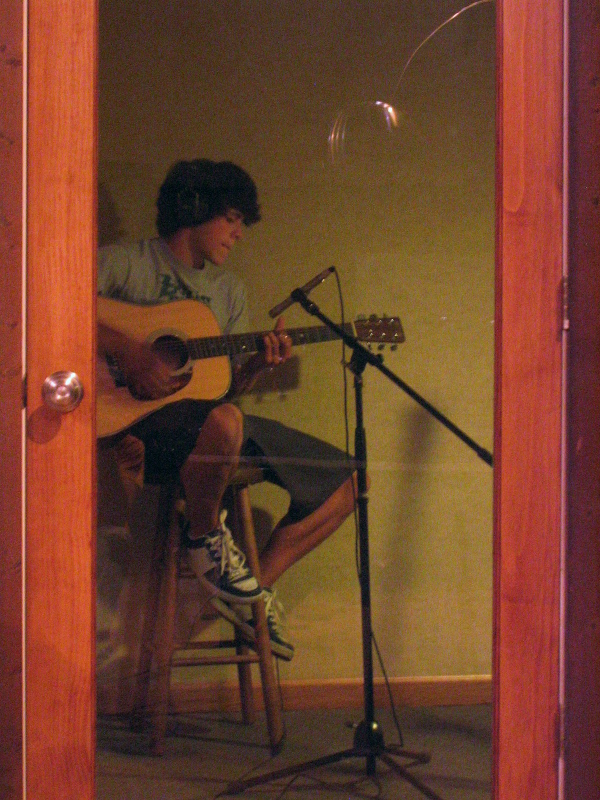Recording an Album - Part 3
With the drums and bass done, the songs were starting to come together. After guitar day all of the instrumentation, save for a few odds and ends, would be done. Keegan and I got to work.
The studio had an impressive collection of guitars and amplifiers but we never considered using them. Every guitar I’ve ever played has its own feel. You get used to them. Likewise for amplifiers. You can get a wide variety of sounds out of even the simplest amplifier. Neither of us wanted to have to get used to a new guitar or constantly tweak settings on an unfamiliar amp. We were comfortable with our own equipment.
The guitars were recorded together in the main room of the studio at a moderate volume. Steve placed several microphones in front of each amplifier with little foam walls to keep the sound from bleeding. The way a guitar sounds is combination of many things - the instrument itself, the performer, the amplification and the microphone. We each got 3 different microphones which were recorded onto separate tracks. That’s 3 tracks for each guitar part. I’m not sure if Steve picked the best-sounding microphone or mixed them together. I thought it sounded fine so I never asked.
When everyone was tuned up we began tracking the guitars. We went through each song and recorded rhythm parts to the drum and bass tracks from the previous days. The engineers wanted us to record one guitar tone at a time. In other words, each song was made up of clean guitars, distorted guitars, solos, and effects. They didn’t want us switching effects and settings in the middle of a take. So we would go through and record all the clean parts of the song first, then go back and record the distorted parts, etc. For some of the solos they had us split them into multiple takes so they blended better. I tied a handkercheif around the neck of my guitar at the nut so that the open strings wouldn’t ring out when I was soloing. I always considered this cheating, but I wanted to get my leads done in as few takes as possible - time is money.
That was the way it proceeded. We did all of the rhythm parts first and then layered on the guitar lines and solos. In demos I had often doubled my solos. This adds a nice effect - there is a lot of nuance in guitar playing and if you record the exact same thing twice you will hear tiny differences. I liked to pan one guitar slightly left and its copy slightly right. In the studio I was so concerned with time I forgot about most of the layering I wanted to do. Oh well, roll with the changes.
We have a song called “Instrumental” and during the early days of the band Keegan decided it would be fun to play the guitar solos for this song behind our heads. We started doing that live and it just became the thing we did for that song. While we were tracking “Instrumental” on guitar day Keegan looked at me right before his solo and I knew exactly what he was thinking. Sure enough he threw his guitar up on his shoulders and performed the solo behind his head. I had to do the same. Steve just laughed and said “hey, it’s your money” before making us do them again. Needless to say, the behind-the-head takes were not used.
Another song called “Rainy Days and Nothing in Between” had the most diverse instrumentation with an acoustic guitar and piano in addition to the standard twin electric guitars, bass and drums. My dad loaned us his Martin acoustic guitar, so that was the acoustic guitar Keegan used. He got to go off in one of the isolation rooms to record it. We were excited to use the grand piano sitting in the corner of the studio, but Steve said it was out of tune and set up an electric piano instead. That was possibly the biggest disappointment of the sessions.
We noticed a Hammond organ on the wall with the other keyboards. It wasn’t the bulky analog monster that every prog rock band in the 1970s had, but it was a Hammond and it had drawbars. I had to use it. Steve set it up and we added it to “Rainy.” Just like a real organ there was no sustain pedal - you had to press and hold the keys as long as you wanted the notes to sound. This was a pain and I had to rearrange a number of the chords in the song so I could switch between them without picking up my hands.
As much as it hurts me to say it, “Rainy Days” is a power ballad. I wanted the solo to have this hammed-up, arena rock feel but my composition for leads back then was based on improvisation. I had performed versions of the solo but it always lacked polish. I wanted something deliberate that built up to these huge, sustained notes. We tried the solo a few times but it wasn’t working. Steve picked up on my frustration and came out of the control room to help me. We did a few more takes and after each one he would talk to me in the headphones and tell me what he thought it needed. The finished solo is as much Steve as it is me. Unfortunately I was never completely satisfied, but what we recorded is a lot better than what I started with. Like several other solos we recorded it in pieces so that it would flow better and I’m pretty sure Steve edited the end of it to make the last few notes sustain forever.
We finished the guitars, more or less, in one day. It wasn’t difficult because we were so familiar with the songs having played them constantly for the past year. There were many times I wanted to redo parts but left them because they were good enough and we were pressed for time. As a result there are countless tiny mistakes that made it through. At first I didn’t hear them. Then they were all I could focus on. Now they’re just part of the album along with all the other parts that aren’t mistakes. But I can’t wax philosophical yet, we still have to record vocals and mix everything down.
Keegan eager to start playing on guitar day.
Bandmates helping each other out.
Riffing. It. Up.
Keegan recording in the isolation room.
Unexcitedly recording the electric piano while the baby grand mocks me from the corner.
“It’s good, but it needs a little more ‘wahhhhh didly-didly-didly-didly-didly neooooooow’”





